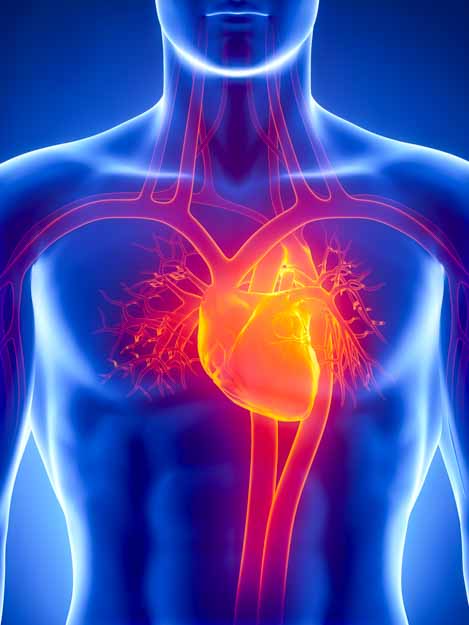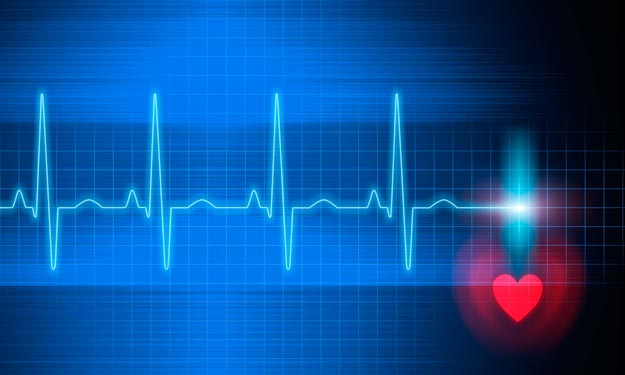Acupuncture is an effective treatment for atherosclerosis. Researchers from the Qian’an Hospital of TCM (Traditional Chinese Medicine) investigated the efficacy of acupuncture for the treatment of carotid artery related atherosclerosis. The study compared two types of acupuncture treatments with drug therapy. One acupuncture protocol produced significantly greater positive patient outcomes than drug therapy. Another acupuncture protocol produced equivalent results to drug therapy. 
Drug therapy, involving the administration of 20 mg of simvastatin per day, was compared with standard acupuncture needle insertion and threading needling insertion.
Simvastatin, also known by the brand name Zocor, is a statin drug used to lower LDL cholesterol levels and triglycerides while increasing beneficial HDL cholesterol levels. Uses of simvastatin include lowering the risk of stroke, heart attack, coronary heart disease, and other disorders of the heart. The group receiving simvastatin had a 36.76% total effective rate. Standard acupuncture produced a 40% total effective rate and threading acupuncture (Tou Xue) produced a 66.7% total effective rate.
Atherosclerosis involves plaque buildup inside arteries that is composed of cholesterol, fatty substances, calcium, fibrin, and cellular waste. Threading acupuncture produced the best clinical results of the three study groups with the greatest reductions in carotid artery intima-media thickness (IMT). The IMT of extracranial carotid arteries is widely used as a measurable index of atherosclerosis.
The researchers concluded that acupuncture successfully regulates high and low shear blood viscosity. The viscosity of whole blood reflects the ability of blood to move freely through the vessels. It is a measure of blood flow resistance and includes both thickness and stickiness as parameters. High blood viscosity increases friction against vessels, impedes oxygen delivery, and increases demands on the heart to move blood. As a results, elevated blood viscosity is linked to cholesterol level disorders, hypertension, and many other cardiovascular disorders.
High shear rate blood viscosity occurs during systole, the normal contraction of the heart. The blood is moving faster when the heart is pumping and the blood is thinner. Low shear rate blood viscosity is during diastole, when the heart is at rest and dilated. The low shear rate viscosity is significantly greater than the high shear rate viscosity. Threading acupuncture significantly downregulated both high and low shear rate blood viscosity levels and outperformed simvastatin. In addition, threading acupuncture reduced plasma viscosity more than simvastatin. Overall, threading acupuncture produced the greatest improvements in the hemorheology index, a measure of blood flow properties.
Threading acupuncture produced the greatest reductions of LDL cholesterol and total cholesterol. The same applied for reductions of triglycerides. Overall, threading acupuncture produced the most significant improvements in blood lipid indices of the three groups.
The study involved ninety patients with carotid artery atherosclerosis that were randomly and equally divided into three groups: standard acupuncture, threading acupuncture, and statin drug therapy. All groups received antihypertensive drugs and had hepatic function panels monitored. 
The threading acupuncture group received Tou Xue acupuncture from one acupoint to another. The point pairings were as follows:
- GB19 (Naokong) to GB20 (Fengchi)
- BL9 (Yuzhen) to BL10 (Tianzhu)
- DU17 (Naohu) to DU16 (Fengfu)
- GB20 (Fengchi) to GB20 (Fengchi), bilateral
After insertion, a mild rotation technique was applied. Total manual acupuncture stimulation time was three minutes. The needles were retained for thirty minutes per acupuncture session. Acupuncture was applied once per day.
The standard acupuncture group received needling at acupoints including:
- PC6 (Neiguan)
- DU26 (Shuigou)
- SP6 (Sanyinjiao)
- HT1 (Jiquan)
- LU5 (Chize)
- BL40 (Weizhong)
Mild reinforcing and reducing techniques were applied. Total needle retention time was thirty minutes per acupuncture session. Acupuncture was applied once per day.
These findings are consistent with a related study by Gao et al. The research was conducted at the Department of Nuclear Medicine at Peking University Shenzhen Hospital using single photon emission computed tomography (SPECT). The researchers note that results of the study demonstrate that acupuncture increases “blood perfusion of ischemic myocardium” for patients with coronary heart disease (CHD). They added that SPECT “clearly display(s)” the “therapeutic effects of acupuncture on CHD, thus providing a new visible research method for CHD studies.”
The randomized study compared electroacupuncture results with nitroglycerine results and determined that electroacupuncture is effective. Nitroglycerine was chosen because it liberates nitric oxide, a potent vasodilator. Nitroglycerine widens blood vessels and improves blood flow to the heart. The researchers applied electroacupuncture bilaterally to PC6 (Neiguan) and BL15 (Xinshu). The acupuncture needles were retained for 30 minutes with electroacupuncture set between two to fifteen Hz at nine to eighteen mA.
The work of Xu et al. is consistent with the aforementioned investigations. Xu et al. conclude that acupuncture alleviates angina pectoris, heart pain. In a meta-analysis, acupuncture was found safe for use in patients taking nitroglycerine, isosorbide mononitrate, or propranolol. The data shows that acupuncture reduced the side effects of the medications while increasing the beneficial clinical results. The meta-analysis shows that acupuncture has a total effective rate for the treatment of angina in a range from 80% to 96.2%. The researchers add that acupoint P6 (Neiguan) “has a therapeutic effect on cardiac and chest ailments including angina pectoris.”
References:
Li YH, Huang HB, Wang WX & Yang LX. (2014). Observation of the head acupuncture through hole on the treatment of carotid artery atherosclerosis. Hebei Journal of Traditional Chinese Medicine. 36(8).
Gao, Z., S. Hu, Z. J. Wang, Q. Chen, and S. W. Jia. "[Treating coronary heart disease by acupuncture at neiguan (PC6) and xinahu (BL15): an efficacy assessment by SPECT]." Zhongguo Zhong xi yi jie he za zhi Zhongguo Zhongxiyi jiehe zazhi= Chinese journal of integrated traditional and Western medicine/Zhongguo Zhong xi yi jie he xue hui, Zhongguo Zhong yi yan jiu yuan zhu ban 33, no. 9 (2013): 1196-1198.
Xu, L., H. Xu, W. Gao, W. Wang, H. Zhang, and D. P. Lu. "Treating angina pectoris by acupuncture therapy." Acupuncture & electro-therapeutics research 38, no. 1-2 (2012): 17-35.


